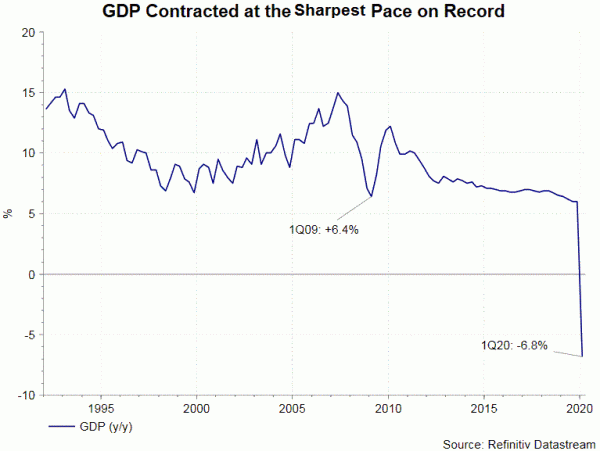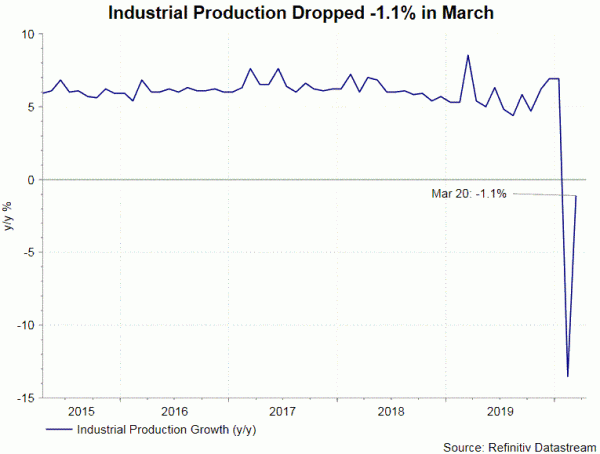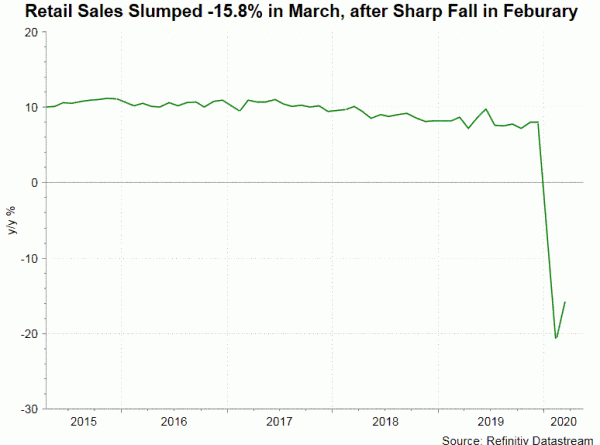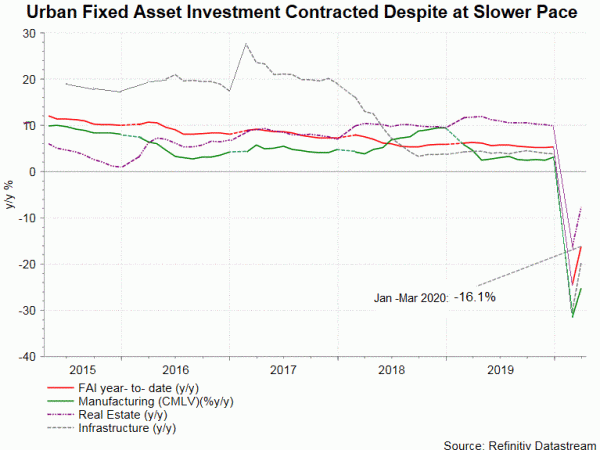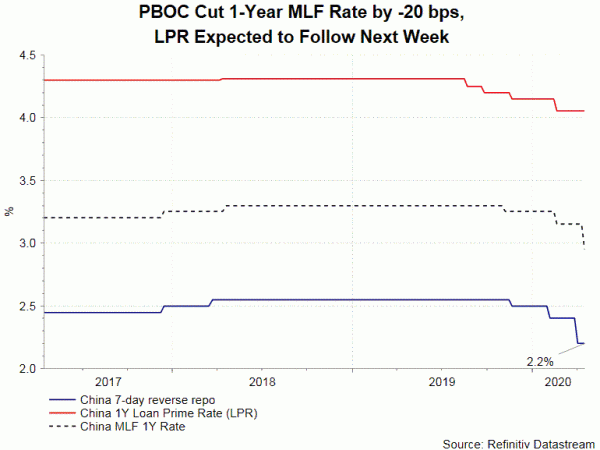The coronavirus outbreak, started in China, has evolved into a global pandemic, causing great damage to the world economy. The latest data show that it led China to the worst economic downturn on record. Major macroeconomic indicators in March show less significant contraction than a month, a result of relaxed containment measures and the government stimulus measures. We remain dovish on the second quarter, as the pandemic has damaged the economy of China’s major trading partners, greatly reducing demand for China’s exports. The government is expected to announce more fiscal and monetary stimulus in the near-future.
GDP plunged -6.8% y/y in 1Q20, weaker than consensus of -6.5%. From a quarter ago, the economy slumped -9.8%, compared with expectations of a -9.9% decline. Major indicators suggest that economic activities remained weak in March, despite less severe than February. Industrial production dropped -1.1% y/y, following a record -13.5% contraction in the first two months of the year. Retail sales plunged 15.8% in March, after a -20.5% decline in the January-February period. Both readings came in better than market expectations. Urban fixed asset investment declined -16.1% in 1Q20 after diving more than one-quarter in the first two months of the year.
The trade report earlier this week showed that China returned trade surplus of US$19.9B in March, after recording 7.09B deficit in the prior month. Exports declined -6.6% y/y, after a -17.2% slump in February. Imports slipped -0.9% y/y, improving from a -4% contraction in February.
Despite the mild improvement from February, March data suggested that economic activities greatly shrank as a result of the containment measures in China and worldwide. Policies from both the monetary and fiscal fronts are needed to stimulate the economy. Last week, PBOC lowered the 1-year MLF rate, by -20 bps, to 2.95%, following the same size of reduction of 7-day reverse repo on March 29. As a guideline for China’s policy rate, loan prime rate (LPR), we expect a rate cut of LPR at the regular fixing date next week (April 20).
Besides rate cut, PBOC lowered interest rate on excess reserves to 0.35% from 0.72%, effective April 7. The last rate cut on excess reserves was in 2008, from 0.99% to 0.72%. Earlier in March, PBOC already announced RRR cut on qualified city banks, rural banks and other rural financial institutions by 100bps, effective on April 15 and May 15 (50bps each) to release around Rmb400B liquidity. We expect to see more easing in coming months.
The Politburo meeting on March 29 confirmed that the government is preparing a comprehensive policy package. It is expected that the China’s fiscal stimulus, including tax and fee cuts, will range between 6.5% to 8% of nominal GDP in 2020 to prevent the economy falling into recession The country’s sovereign bonds will be bought by corporate treasuries until the end of April, but then some of them will switch from government bonds into investment grade corporate bonds as the market recovers in the second quarter.




